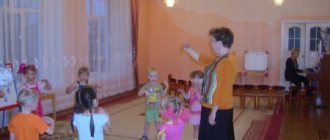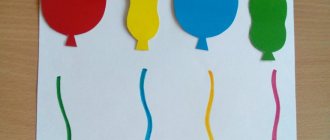Methodical manual “Observation Diary”
| Author: Bondarenko Tatyana Nikolaevna, senior teacher, first qualification category MBDOU TsRR - d/s "Buratino" Kogalym |
Kindergarten is the first link in the system of continuous environmental education, so it is no coincidence that teachers are faced with the task of forming the foundations of a culture of rational environmental management among preschoolers.
Vegetable garden and flower garden are used to develop children’s skills in caring for plants, getting to know the main vegetable crops, and their importance in our diet.
In this case, children should be guided by the structural features of plants, the period of growth and development and their needs. The Observation Diary will help us with this Photo 4
Goal: To introduce children to the life of plants; teach how to keep a diary of observation of plant development.
Tasks
To give an idea of growing plants from seeds, of the dependence of their growth on the presence of moisture, light, and heat.
Learn to observe changes in plant development, analyze, and draw conclusions about certain patterns and relationships.
Develop cognitive interest; ability to analyze and synthesize, to self-control.
Continue to improve the labor skills of children; develop hard work.
Reinforce knowledge about the structure of plants.
Cultivate an interest in plants, gain experience in an attentive and caring attitude towards growing plants.
Description of the manual
Made from fabric, paper
Complies with methodological, sanitary and hygienic requirements
Used with children of all ages
Designed for observing plants (growth, development, care)
Used for carrying out work assignments and independent activities
Content
Plant shape, cards (plant development, methods of care).
Using the manual
Observation is a purposeful, systematic perception of objects and phenomena of the surrounding world.
- Accumulation of knowledge about plant growth and development
- Comparison, the observed state of an object with what was before
- Determining the condition of the plant (the need for watering), or restoring a picture of the whole (whether the tomatoes are ripe by color)
- Development of intelligence and observation skills
- Improving the processes of analysis, comparison, and inference
- Observations when children are highly mentally active, makes them think, look for answers to questions, develop curiosity
- Establishing a connection between this observation and the previous one
Work
Work in nature is of particular importance for the all-round development of children.
Preschoolers master skills as they follow plants and learn what conditions are necessary for growth and development. With pleasure, children learn to loosen and weed the garden, water vegetables, and watch with great interest the growth and development of plants, noting their observations in the observation calendar.
The manual attracts children to participate in all types of work on caring for plants, growing them, and fosters independence.
It is important that children are not just excited about the prospect of growing delicious vegetables. The manual helps to understand the need for systematic plant care. At the same time, children should be guided by the structural features of plants, the period of growth and development and their needs.
Children receive tasks that require careful monitoring of the condition of the plant.
Use of benefits by age
Junior groups
- a surprise moment when getting acquainted with plants
- developing the ability to distinguish certain vegetables by appearance
Middle groups
- organizing observations of plant growth and development with children
- identification of characteristic features (size, color, shape, parts)
- gaming techniques
- work assignments
- comparison of objects
Senior groups
- conducting long-term observations of plant growth and development
- independent conclusions and conclusions
- visual aid (pattern and sequence of phases, stages of development)
- when using comparison techniques, when making observations
- children's verbal reports of observation results
Preparatory groups
- for children to demonstrate greater independence
- establishing various connections
- identify similar features common to a whole group of objects
- to compare views
- making your own nature calendar
A consciously correct attitude towards nature is built on a sensory perception of nature, an emotional attitude towards it and knowledge about the characteristics of life, growth and development of individual living beings. The predominant visual-effective and visual-figurative forms of thinking in preschool childhood ensure the assimilation of only specially selected and age-appropriate information about nature. The criteria for selecting natural materials are their visual presentation and the possibility of inclusion in practical activities.
There were 8 votes for this work.
Voting ended on April 13, 2014 at 11:00 p.m. Thanks everyone for participating!
Share




